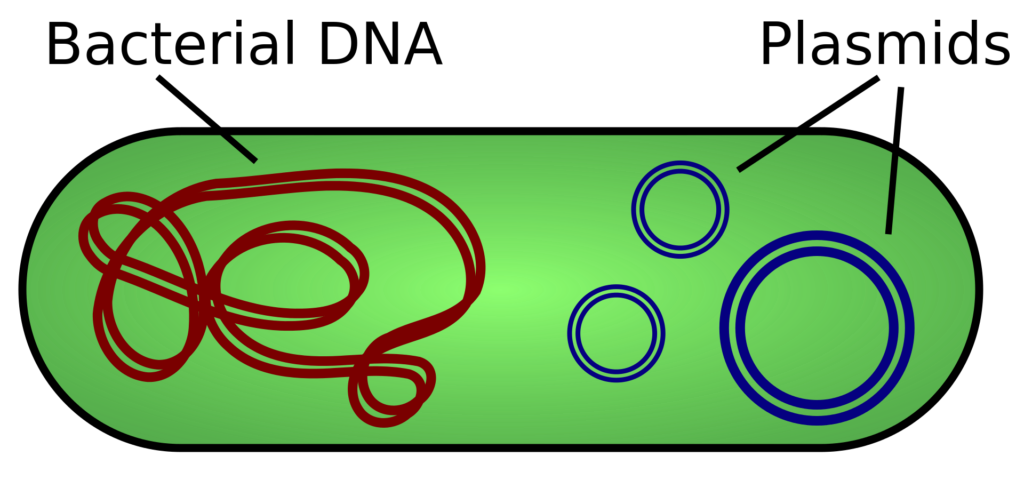A plasmid is a small, double-stranded, circular DNA molecule found in bacteria and some other microscopic organisms. Unlike genomic DNA, which is chromosomal DNA, plasmid DNA is extrachromosomal (Figure 1).

Plasmids play a crucial role in molecular biology and biotechnology and are widely used in various therapeutic applications, such as gene therapy (e.g., AAV and Lentivirus), DNA vaccines, mRNA vaccines, and therapeutics.
Many biotech companies do not have the capability to produce their own GMP-grade (or even research-grade) plasmids, and the common practice is to outsource plasmid production to external CMOs/CDMOs. Major CMOs/CDMOs for plasmid production include Aldevron, Lonza, Charles River, Wuxi, etc. However, there are a couple of challenges associated with outsourcing plasmids, such as the long lead time and high cost of a single batch. For example, to order GMP-grade plasmids, the lead time can be anywhere between 6-12 months, which poses a significant challenge to the overall program timeline.
There are multiple ways to produce pDNA. The conventional method is to use E. Coli fermentation. Another innovative approach is to use enzymatic reactions, such as the Doggybone DNA technology from Touchlight. We’ll briefly discuss how pDNA is produced from the initial design.
- Plasmid DNA sequence design – A plasmid consists of several parts: origin of replication, antibiotic resistance gene, selectable marker, promoter, and gene of interest (GOI) flanked by restriction sites. When designing a plasmid, the main variation lies in the GOI, while the other components are referred to as the backbone of plasmids or empty vectors, which are relatively universal. Designing a plasmid involves creating a specific DNA molecule for a specific application. Plasmids can be designed using different tools, such as Benchling, GenSmart, etc.
- Plasmid cloning – After designing a plasmid sequence, the initial copies of plasmids are produced by ligating the empty vector (backbone) together with the chemically synthesized GOI. Then, through transformation into bacteria, clone selection/screening, and verification, the lead clone that successfully incorporates the plasmids is identified and used for further cell banking.
- Cell banking – Research cell banks (RCB), master cell banks (MCB), and working cell banks (WCB) are created using the selected clone from the previous step, enabling their use in research and production.
- Plasmid production – This phase consists of upstream processing, downstream processing, and fill/finish. In the upstream process, cells from MCB or WCB are thawed and undergo a seed train to accumulate enough cells. These cells are then inoculated into a production bioreactor to initiate the fermentation process for plasmid production. In the downstream process, cells are lysed, and the culture undergoes a series of purification steps, including clarification, chromatography (AEX, HIC, etc.), concentration, diafiltration, and final fill & finish.
- Analysis and release – The plasmids are then analyzed to ensure they meet industry standards and other specifications before being released.
Reference: